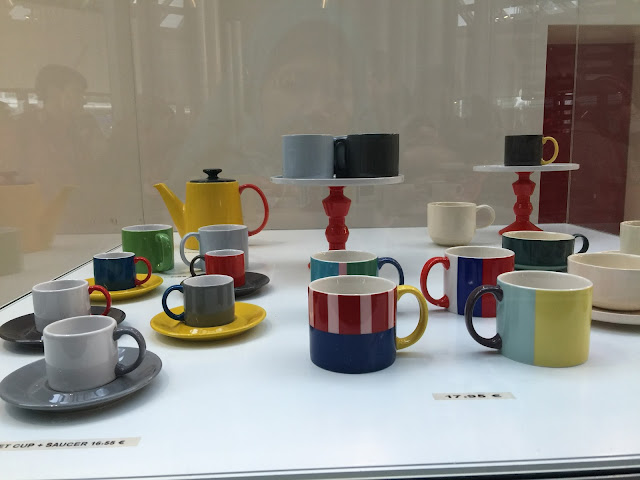Date of visit: 10th October 2015
Sometimes it's nice to mix a tour to a historical paces and a modern structure, like we did when we were in Brussels. The Atomium is something that a tourist should consider exploring as it offers a magnificent overview of the city from its observatory deck. It was nearing 4pm when we arrived at Heysel exhibition park. Beside the Atomium, the park is also a place for another Brussels famous attraction, i.e. Mini Europe. It sit side by side and you may view the whole Mini Europe from the observatory deck. We decided to reminiscence our time when we were in Galata Tower, in Istanbul last year by having similar coffee break at the Atomium restaurant deck. Surprisingly, it was a long queue still at the lift area although it was almost closing time. The Atomium is open from 10.00 am till 6.00 pm almost everyday.
The
Atomium is a building in Brussels originally constructed for Expo 58, i.e. the
1958 Brussels World's Fair. It was designed by the engineer Andre Waterkeyn and
2 architects Andre and Jean Polak as a 102 meter height structure. It has 9 of 18
meter diameter of stainless steel clad spheres which are connected to each
other so that the whole thing forms the shape of a unit cell of an iron crystal
magnified 165 billion times. It is being used as the Art and Design Atomium Museum (ADAM) dedicated to the art and design of the 20th century and today.
A tubes
of 3 meter diameter connected the spheres along the 12 edges of the cube and
all 8 vertices to the centre. In the central part of the vertical tube, the
stairs, an escalators and a lift are built to allow access to the five
habitable spheres which contain exhibit halls and other public spaces. The top
sphere includes a restaurant which has a panoramic view of Brussels. Beneath
the restaurants are the observatory deck. CNN has named Brussels Automium as Europe's
most bizarre building.
Due
to its popularity, the renovation of the Atomium began in March 2004. During
that period of time, it was closed to the public until 18 February 2006. The
renovations included replacing the faded aluminium sheets on the sphere with
stainless steel to give a significant view of the whole city at every angle. The
old aluminium was sold to the public as souvenirs as to finance the said
renovations cost. It was recorded that a triangular piece of about 2 metres long
was sold for Euro 1,000.
3 out of the 4 top spheres lack
vertical support and hence are not open to the public for safety reasons,
although the sphere at the pinnacle is open to the public. The original design
called for no supports; the structure was simply to rest on the spheres. Wind
tunnel tests proved that the structure would have toppled in an 80 km/h wind
(140 km/h winds have been recorded in Belgium). Support columns were added to achieve
enough resistance against overturning.
The observatory deck can only be occupied by a certain number of tourist at a time. It explained a long queue earlier on. There's also a staircase from an observatory deck to the restaurant upstairs beside the staircases provided for those who choose to climb instead. Climbing is not a bad choice at all as along the way up there are many attractive things to see, which we missed that day. You may website Atomium official website for further info and for more photos.
For the record, we truly enjoy our time in Atomium that day. Instead of having coffee, we chose soda, for a change. The restaurant has been decorated to match its external facade. Everything had similarity in each other, i.e. comes in modern arts design. See a curvy and unique restaurant chair for instance in below photo. It's very stylish yet comfy.
Before leaving, we explored the souvenir shop located at the ground level admiring some of the display items that are for sale. How I wish to brought these little cuties back. If not because there's a long way to go plus another 7 cities to visit, I would not mind collected them too for a display at home too.
And before bidding our farewell, we snapped the last few photos as memory of the last toured place before heading back to the hotel and getting ready to leave for Amsterdam the next morning.
























































